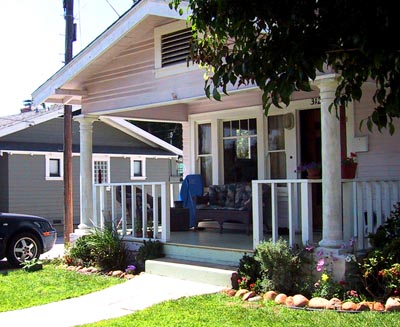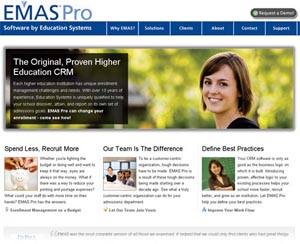The three things every business owner needs to understand about web sites
I’ve had the pleasure to work with many business owners in my line of work. Something I always need to explain (happily) is how a website works, what is needed to get one on-line, and what needs to be maintained. About half of the information I give is good to know and the other half is vital to protecting your business, your brand, and your security. This post covers the absolute minimum you should understand about your web site. Even if you’re “not techy” (poor excuse), get comfortable with these so you’re not caught with your pants down.
The Big Three
When I explain websites to people who are new to the web, I use a house metaphor. Owning a house has three parts like a website: The address, the land it’s on, and the house itself. Without land, where does the house go? Without the house, what is the point of the land? Without an address, how does mail get to you and how do friends find you? All three pieces come together to make a place you live.

Here are the three things you need to understand about web sites if you have or are considering building a website. Ignore at your own risk.
The Domain

This is, arguably, the most critical piece of the website puzzle. Your domain name is a crucial piece of your brand and, if you’re not careful, it can be taken away from you.
Using the house metaphor, the domain name is your street address with one major difference: someone can take your address away. Think about where you live and how you use your address – mail, food deliveries, visitors, official stuff (taxes, etc). Now imagine that it could be taken away or deactivated if you didn’t register it regularly. Yikes!
There are three critical things to learn and understand about domain names:
Choosing a domain name: A lot of thought needs to go into picking a domain name. You’re not going to be able to change it (without a lot of hassle and re-work) and the right one can help you rank better in search engines. Put some thought into it before you commit (you should probably do that with everything, actually).
Owning a domain name: Once you’ve chosen the right domain name, you’re going to need to buy it and own it. Think of your domain like your car insurance – you’re going to have it for a long time and you don’t want any gaps in service. Make sure YOUR personal information is logged for your domain and buy your domain names separate from your web host if you can.
Maintain it: Owning a domain name is more than just paying $8 – 15 per year. Make sure the public information is correct and ignore ANYTHING mailed or emailed to you about your domain unless it comes from your registrar. Also, keep your domain login information safe and set a calendar reminder for the expiration date.
The Host

Many people confuse their domain name with their web host. Though your domain and hosting might be with the same company, they are distinctly different. The domain name directs visitors to your site and your host delivers your site to these viewers.
Think about the house again. Your house can’t exist without the land it is built on. The land can owned by you or leased from someone else and you have to pay those taxes/dues or you’re in trouble.
There are three main things to understand about web hosting:
Performance is critical: You can build the greatest web site in the world but, unless it is being served quickly and without errors, there is no point in having it out there. You get what you pay for so make sure you’re not buying the cheapest.
Word of mouth is king: Unless you’ve heard from someone directly about a particular host, take care. There are many review sites out there that are jammed with great reviews from affiliates (i.e. people who make money from a particular host). Listen to friends, family, and trusted online sources.
Understand the features that matter: Unlimited everything might sound nice but make sure your host has what you need. Look for the number of FTP accounts, number of databases, the pre-installed software, and the email support. If you’re a small business with a small site, don’t worry about the storage or transfer amount; you’ll never reach those limits.
The site

The site itself is made up of at least one and potentially thousands of individual files. These files can be static (the page you’re looking at is a file that does not change unless it’s edited) or dynamic (changes can be made to the site from other on-line programs). When you hire a designer/developer like myself, you’re paying them to build these files and pass them on to the host.
Once again, back to the house metaphor. Your site is the house itself, the thing that everyone sees. Houses, like webpages, communicate something about their owners and need upkeep. You should be proud of your house and feel comfortable with it. It also doesn’t need to be the flashiest one on the block to get the job done.
A few talking points about web sites:
Be careful who you hire: I’ve seen some scary websites over the years. Though much of this comes from designers who don’t care or don’t know better, it’s up to you to pick the right one. Ask about valid code (I write it), ask if they use CSS (I use it), and ask them what they think about web standards (a great idea but nothing is perfect). If they look at you funny, run away.
Flashy doesn’t mean effective: For as many awful sites as I’ve seen, I’ve also seen a lot of very cool ones that aren’t doing anything. Paying $10K for a cutting edge, beautiful site doesn’t mean anything is going to come of it. Be clear on your goals and make sure the visuals contribute to them.
Make sure the outcome feels right: There are design conventions, colors that work well together, and typography rules-of-thumb but none of these mean anything if your site doesn’t feel like your own. As you’re working through a design plan, make sure that the product represents you and your business. If you don’t like it at any step, never be afraid to speak up. Also, ask others for their opinion.
< Take Action >
Comment via:
Subscribe via:
< Read More >
Tags
Newer

May 18, 2009
StumbleUpon: You Disappointed Me
Poor usability abound but, for some things, there are no excuses.
Older

Apr 30, 2009
Pleased To Announce a New Client Website Launched: EMASPro.com
I’m very excited to announce the culmination of a lot of planning, design, and coding. The site emaspro.com went live on Monday night without any major fiascoes, issues, meltdowns, or problems.